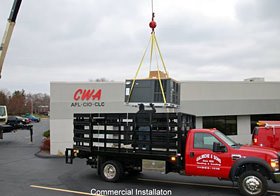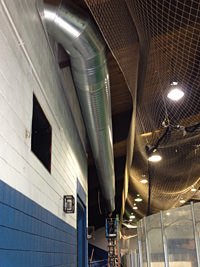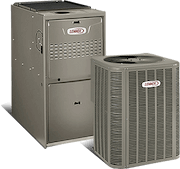
When it comes to energy efficiency in your home, there is no doubt your furnace and air-conditioner play a huge part. Clean filters, lubricated bearings, and unblocked air passages all help reduce the wear and tear on your HVAC system while making it run smoother. One thing homeowners should not overlook, however, is the driving force behind that HVAC system – the thermostat.
Your thermostat is, in essence, the brains of your HVAC system. It tells an air-conditioner when to turn on/off and controls at what temperature. Properly utilizing your thermostat can be a great source of HVAC energy efficiency, but when operated improperly it can be a huge utility drain.
Specifically, many homeowners are simply unaware that there is a difference between operating the thermostat in the ‘on’ control vs. doing so in the ‘auto’ setting.
What is ‘On’ and What is ‘Auto’?
Both the ‘on’ mode and the ‘auto’ mode refer to how the thermostat controls your HVAC fan. In the on setting, the fan runs constantly. This is a good way to filter air at a continuous rate and it does limit the amount of starts and stops that your fan makes. As you can expect, this is also a huge drain on your energy efficiency – costing up to an extra $50 or more per month in your utility bills.
The auto setting triggers the fan to turn on only when the system is actively heating or cooling the air. This is a more energy-efficient setting as the fan, blower motor, etc. are shut down when not needed to transport heated or cooled air throughout your house.
Why the Auto Setting is Recommended

It should be noted that using the ‘on’ setting on your thermostat does not necessarily lessen the wear and tear on your HVAC due to fewer starts and stops. In fact, it could be said that the fan working at all times will actually increase how soon repairs are needed.
Therefore, the ‘auto’ mode is preferred mostly because of the increased energy efficiency that it brings. The fan runs the least amount of time and only at the minimal rate needed to satisfy the thermostat requirements.
There is More to Efficient Thermostat Usage
One of the supposed downfalls of using the ‘auto’ setting compared to ‘on’ is that your air stops moving when the fan is turned off. One of the ways around this is to upgrade to a thermostat with a ‘circulate’ setting.
In addition, modern thermostats are a great investment for a number of other reasons. For one, they are programmable so that you can specify different temperature settings for different times and days of the week. Most new smart thermostats are now WiFi enabled as well so you can control and monitor the device from your smart phone.
A thermostat is an inexpensive purchase that can provide you with incredible energy savings and can help to increase the life span of your HVAC system – you just need to know how to use it properly. Contact the heating & air conditioning experts at Galmiche & Sons in St. Louis today to learn more about how a new thermostat can help save you money in the long run.









